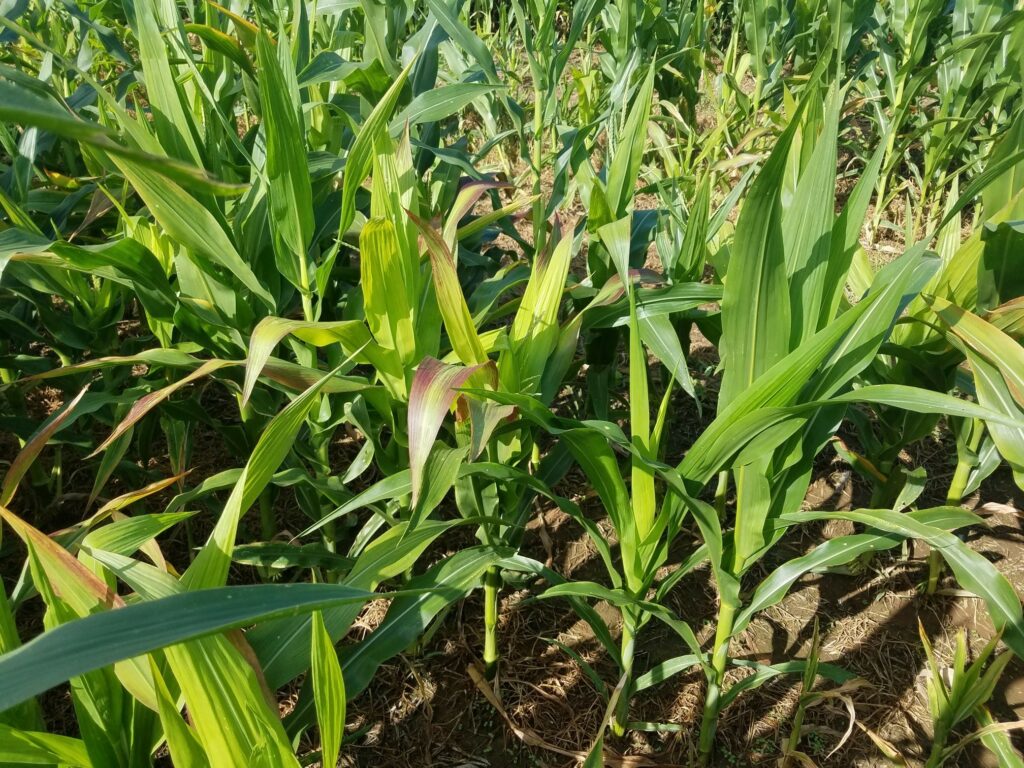
Two old and now “new” again corn viral diseases Maize Dwarf Mosaic (MDM) and Maize Chlorotic Dwarf (MCDV) have been causing severe stunting of corn in a few fields in southwest Tennessee. With the slowly increasing spread of glyphosate-resistant (GR) Johnsongrass it was only a matter of time before these two diseases would once again become an issue in corn.
Before the advent of Round Ready corn hybrids, the two diseases were common problems in corn production anywhere Johnsongrass grew. The reason for this was that the viruses overwinter in Johnsongrass. The MDM virus is vectored from Johnsongrass by several species of aphids to corn while MCDV is vectored by a leaf hopper to corn.
Not surprisingly, the corn suffering from these viruses will typically be found near patches of Johnsongrass. The symptoms are stunted corn plants exhibiting stacked nodes with leaves that often turn yellow to reddish or in some cases purple. These infected plants often will not produce an ear. There is no rescue treatment for infected plants.
These two diseases were first identified in the late 1960s and 1970s. By the 1980s, seed corn companies would sell hybrids with resistance to these viruses. The hybrids were typically 118 to 123 day in maturity. My understanding is that the virus resistant corn breeding effort for most seed companies was discontinued when Roundup Ready corn became prevalent.
Glyphosate is not working well on Johnsongrass in some counties. The most prevalent area for the GR biotype is Shelby, Tipton, Fayette, Haywood and Madison counties. However, it can be found in other locales within the state. In our research funded by the Tennessee Corn Promotion Board the herbicide Steadfast provided the best overall control of GR Johnsongrass.

